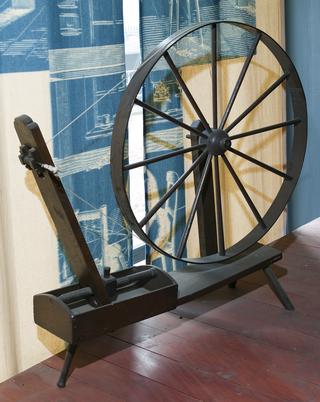
Water frame spindle
- Made:
- 1800-1830 in unknown place




Wooden spindle, resembles the type used on a water frame, or could also have been used on a yarn winding machine, found at Murrays' Mills in Ancoats, during the archaeological survey of the site.
Murrays’ Mills is one of the oldest surviving steam-powered cotton spinning mill complexes. First established in Ancoats, East Manchester, in 1797 by scottish brothers George and Adam Murray, it became, along with neighbouring McConnel and Kennedy mills, one of the largest industrial complexes of its time, reflecting Ancoats’ development into the first industrial suburb.
This spindle resembles the type used on a water frame, the first successful powered spinning machine, devised by Richard Arkwright in 1767. Richard Arkwright charged mill owners to use his water frame, calculating how much they owed based on the number of spindles in their mill.
Details
- Category:
- Textile Industry
- Object Number:
- 2018-35
- Materials:
- wood (unidentified)
- Measurements:
-
overall: 50 mm x 80 mm x 80 mm,
- type:
- spindle
- credit:
- Gift of Manchester Life Development Company Limited




